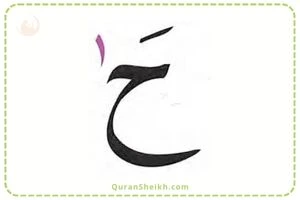Master Madd Letters in Arabic (Alif, Waw, Ya Sagheera) | Noorani Qaida Lesson 7 Guide
Noorani Qaida Lesson 7: Madd means stretching. So in this lesson, we will talk about the letters that are used to stretch the sound. Recall your first lesson where we discussed the letters of madd. Here we will study those letters in detail.
There are only three stretch letters in Arabic language. These letters of stretch related with the VOWELS. Before this lesson we used the vowels to make a short or sharp sound but here we will try to make a long or stretched sound with the help of these vowels.
Noorani Qaida lesson 7 Video
Learn Madd Letters with Noorani Qaida Lesson 7. Master Alif Sagheera, Ya Sagheera and Waw Sagheera for perfect Quran recitation. Start today![1].
Join thousands of Muslim Families who love learning Noorani Qaida & Quran reading from the comfort of their Homes.
How many vowels are in Arabic?
Arabic has 6 main vowels:
- Short vowels (Harakat): فَتْحَة (a – ـَ), كَسْرَة (i – ـِ), ضَمَّة (u – ـُ).
- Long vowels (Madd): ا (ā – Alif), ي (ī – Ya), و (ū – Waw).
These vowels guide pronunciation in Quranic recitation (Tajweed) and standard Arabic. Short vowels are diacritics, while long vowels are actual letters.
Also, you know that fathah produces the sound of short A, kasrah produces the sound of short E, and dammah produces the sound of short U.
What are the three Madd Letters?
The Madd Letters in Arabic Tajweed are three: Alif (ا), Waw (و), and Ya (ي). These are called Huruf al-Madd and elongate vowel sounds when they appear with a sukoon (ْ) or are preceded by a corresponding short vowel (harakah). This rule ensures proper pronunciation in Quranic recitation.
- Fathah produces the sound of long A as ‘AA’
- Kasrah produces the sound of long E as ‘EE’
- Dammah produces the sound of long U as ‘UU’
✔️ Alif (ا) always corresponds to this fathah sound because this looks like a fathah.
✔️ Yaa (و) always corresponds to this kasrah sound.
✔️ waw (ي) always corresponds to this dammah sound because it looks like a dammah.
Remember that, harakah or short vowel is defined previously as “opening OR closing of a finger”. The long vowels are the double of short vowels. So, it is defined as “opening AND closing of a finger”.
Example: بَ this is one harakah (short vowel). If we add alif at the end of ب it will become بَا two harakah (long vowel). Same for kasrah and dammah.
In the Noble Quran, the madd letters appear in two different forms.
- You may have a small alif or a big alif.
- Similarly, small form of yaa or a big yaa.
- Small form of waw or a big waw.
So, point to ponder is that all these forms are of madd letters. These letters can appear in a small form or a large form.
What is Alif Sagheera in Arabic (Alif Saghira)?
Alif Sagheera (أَلِف صَغِيرَة), or “Small Alif,” refers to the Arabic letter ى (Alif Maqsura/ألف مقصورة). It appears at the end of words, written as a Ya (ي) without dots, and functions like a long Alif (ا) in pronunciation, elongating the /aː/ sound (e.g., في “عَلَى”). It is crucial for proper spelling and Quranic recitation.
How to differentiate between small and large madd letters?
The small alif is written as “الف صغیرہ” (Alif Saghira).
The small yaa is written as “یا صغیرہ” (Yaa Saghira.
The small waw is written as “واو صغیرہ” (Waw Saghira).
In Noorani Qaida lesson 7, we will focus on these small letters ” الحروف الصغيره” .
Whenever a fathah is followed by alif, dammah is followed by waw and kasrah is followed by yaa then one harakah is stretched to two harakaat. This is called as “MADDTABEEIY (Natural Madd OR Two Harakat)”.
We already have studied harakat lesson. This lesson is the extension of that lesson. Here we will add madd letters to the harakah letters and will stretch them to two harakaat. Let’s start the lesson.

Learn Quran Online fast and easy with a Qualifies Arab teacher, Get 30% OFF join now.

بَ ا : Mastering Madd with Alif Sagheera
📋 Transcript بَ ا: read it as “با فتحہ الف صغیرہ با ” (baa fathah alif saghira baaa).
🔊 Listen to the correct pronunciation of بَ ا (baa fathah alif sagheera baaa). Perfect for beginners learning Quranic Arabic and Tajweed. Improve your recitation today!

يَ ا : Learn Yaa with Alif Sagheera Sound
📋 Transcript يَ ا: read it as “یا فتحہ الف صغیرہ یا” (yaa fathah alif saghira yaaa).
🔊 Discover the proper pronunciation of يَ ا (yaa fathah alif saghira yaaa) with our easy-to-follow audio lesson. Essential for accurate Tajweed.

رَ ا : Pronouncing Alif Madd for Quranic Clarity
📋 Transcript رَ ا: read it as “را فتحہ الف صغیرہ را” (raa fathah alif saghira raaa).
🔊 Learn how to correctly pronounce رَ ا (raa fathah alif sagheera raaa). This audio guide helps you understand and master Madd letters in Quranic Arabic. Practice and perfect!

مَ ا : Mastering Meem with Alif Sagheera
📋 Transcript مَ ا: read it as “میم فتحہ الف صغیرہ ما” (meem fathah alif saghira maaa).
🔊 Perfect your Quran reading with the correct pronunciation of مَ ا (meem fathah alif saghira maaa). Our audio guide makes it easy to learn.

لَ ا : Essential Alif Sagheera Pronunciation Practice
📋 Transcript لَ ا: read it as “لام فتحہ الف صغیرہ لام” (laam fathah alif saghira laam).
🔊 Improve your Quranic recitation with our audio lesson on لَ ا (laam fathah alif sagheera laam). Perfect for mastering Madd letters and enhancing your Tajweed.

وَا : Pronouncing Waw with Alif Sagheera
📋 Transcript وَا: read it as “واو فتحہ الف صغیرہ وا” (waw fathah alif saghira waaa).
🔊 Improve your Tajweed with our audio guide on وَا (waw fathah alif saghira waaa). Ideal for learners aiming to perfect their Quran recitation.

نَ ا : Master Alif Sagheera for Perfect Tajweed
📋 Transcript نَ ا: read it as “نون فتحہ الف صغیرہ نا” (noon fathah alif saghira naaa).
🔊 Listen to the proper pronunciation of نَ ا (noon fathah alif sagheera naaa) to improve your Quran reading. Ideal for beginners and advanced learners alike.

ءَ ا : Correct Pronunciation of Alif Sagheera with Hamza
📋 Transcript ءَ ا: read it as “ھمزہ فتحہ الف صغیرہ ءا” (hamza fathah alif saghira aaa).
🔊 Learn how to correctly pronounce ءَ ا (hamza fathah alif saghira aaa). This audio guide helps you understand and master Madd letters in Quranic Arabic. Practice and perfect!

هـَ ا : Perfecting Alif Sagheera in Haa
📋 Transcript هـَ ا: read it as “ھا فتحہ الف صغیرہ ھا” (Haa fathah alif saghira Haaa).
🔊 Learn the correct pronunciation of هـَ ا (Haa fathah alif sagheera Haaa) with this audio guide. Essential for clear and accurate Quranic recitation.

عَ ا : Mastering Ain with Alif Sagheera
📋 Transcript عَ ا: read it as “عین فتحہ الف صغیرہ عین” (ayeeh fathah alif saghira ayeeen).
🔊 Enhance your Quranic recitation with our audio lesson on عَ ا (ayeeh fathah alif saghira ayeeen). Perfect for mastering Madd letters and enhancing your Tajweed.

حَ ا : Pronounce Haa with Alif Sagheera
📋 Transcript حَ ا: read it as “حا فتحہ الف صغیرہ حا” (haa fathah alif saghira haaa).
🔊 Understand the proper Tajweed for حَ ا (haa fathah alif saghira haaa) with our audio lesson. Perfect for those wanting to enhance their Quran reading skills.

غَ ا : Perfecting Ghayn with Alif Sagheera
📋 Transcript غَ ا: read it as “غین فتحہ الف صغیرہ غین” (ghayeen fathah alif saghira gahyeeen).
🔊 Discover the proper pronunciation of غَ ا (ghayeen fathah alif saghira gahyeeen) with our easy-to-follow audio lesson. Essential for accurate Tajweed.

خَ ا : Alif Sagheera with Khaa Sound
📋 Transcript خَ ا: read it as “خا فتحہ الف صغیرہ خا” (khaa fathah alif saghira khaaa).
🔊 Practice the pronunciation of خَ ا (khaa fathah alif saghira khaaa) to improve your Tajweed. Use our audio guide for clear and accurate recitation.

تَ ا : Ta and Alif Sagheera: Mastering the Madd
📋 Transcript تَ ا: read it as “تا فتحہ الف صغیرہ تا” (taa fathah alif saghira taaa).
🔊 Listen to the correct pronunciation of تَ ا (taa fathah alif saghira taaa). Essential for accurate Tajweed and fluent Quran reading. Listen and repeat!
ثَ ا: read it as “ثا فتحہ الف صغیرہ ثا” (thaa fatha alif saghira thaaa).
دَ ا: read it as “دال فتحہ الف صغیرہ دال” (daal fathah alif saghira daaal).
زَ ا: read it as “زا فتحہ الف صغیرہ زا” (zaa fathah alif saghira zaaa).
شَ ا: read it as “شین فتحہ الف صغیرہ شین” (sheen fathah alif saghira sheen).
ضَ ا: read it as “ضاد الف صغیرہ ضا” (Zaad alif saghira Daaad).
ظَ ا: read it as “ظا فتحہ الف صغیرہ ظا” (Thaa fathah alif saghira Thaaa).
قَ ا: read it as “قاف فتحہ الف صغیرہ قا” (qaaf fathah alif saghira qaaf).
:إِ ى read it as “ھمزہ کسرہ یا صغیرہ ای” (hamzah kasrah yaa saghira eee).
وُ و: read it as “واو ضممہ واو صغیرہ وو” (waao dammah waao saghira wuuu).
ءُ و: read it as “ھمزہ ضممہ واو صغیرہ اوو” (hamzah dammah waao saghira uuu).
جَ ا: read it as “جیم فتحہ الف صغیرہ جیم” (jeem fathah alif saghira jeeem).
ذَ ا: read it as “ذال فتحہ الف صغیرہ ذال” (thaal fatha alif saghira thaaal).
سَ ا: read it as “سین فتحہ الف صغیرہ سین” (seen fathah alif saghira seen).
صَ ا: read it as “صاد فتحہ الف صغیرہ صا” (saad alif saghira saaad).
طَ ا: read it as “طا فتحہ الف صغیرہ طا” (Taa fathah alif saghira Taaa).
فَ ا: read it as “فا فتحہ الف صغیرہ فا” (faa fathah alif saghira faaa).
كَ ا: read it as “کاف فتحہ الف صغیرہ کا” (kaaf fathah alif saghira kaaaf).
هـِ ى: read it as “ھا کسرہ یا صغیرہ ھی” (Haa kasrah yaa saghira Hiii).
هُ و: read it as “ھا ضممہ واو صغیرہ ھو” (Haa dammah waao saghira huuu).
Remember: practice this lesson by reading these words without Hijaa.
Arabic Qaida Noorania book PDF:
Unlock the foundation of Quranic reading! Download your free Noorani Qaida PDF — the ultimate guide to mastering Arabic letters, Tajweed rules, and fluent Quran recitation. Trusted by thousands worldwide, this step-by-step companion is your key to confidence. Start today & Download Now!
Noorani Qaida Online Course:
Quran Sheikh Institute provide you Noorani Qaida course Register now and get 25% OFF.
Start noorani qaida lessons and know how to read Arabic Alphabet up to Learn Quran online with Tajweed insha Allah well.
Learn Quran for Kids & Adults – From Beginner to Fluent
Free Trial Lesson – Sign Up Today

FAQs about Noorani Qaida Lesson 7 – Madd Letters Rules & Examples
What are Madd Letters in Arabic?
Madd letters (حروف المد) are Alif (ا), Waw (و), and Ya (ي). They elongate vowel sounds in Quranic recitation when preceded by their corresponding short vowels (Fatha, Damma, Kasra) or followed by a Sukoon (ْ).
How many Madd letters are there in Arabic?
There are 3 Madd letters: Alif (ا), Waw (و), and Ya (ي). These are essential for elongating sounds (e.g., “قَالُوا” becomes “Qāloo”).
How do Madd letters work in Noorani Qaida Lesson 7?
Madd letters stretch vowels for 2 counts (harakat) when:
✔️ Preceded by their short vowel (e.g., فَ + ا = فَا → “Fā”).
✔️ Followed by a Sukoon (e.g., بِيْ → “Bī”).
What is the difference between natural (Madd Asli) and secondary Madd (Madd Far’i)?
✔️ Natural Madd: Elongation for 2 counts (e.g., “نُوحِيهَا”).
✔️ Secondary Madd: Extended beyond 2 counts due to Hamza (ء) or Sukoon (e.g., “جَاءَ”). (Lesson 7 focuses on natural Madd).
Why are Madd letters important for Quranic recitation?
Correct elongation ensures proper Tajweed, preserves meaning (e.g., “قَالَ” vs. “قَالُوا”), and reflects the rhythmic beauty of Quranic Arabic.
How to practice Madd letters effectively?
Yes! Lesson 2 builds foundational skills for Tajweed by:
✔️ Repeat words with Madd letters (e.g., “سَوَاء”, “رَحِيم”).
✔️ Use audio guides from qualified teachers (like Quran Sheikh).
✔️ Master Sukoon and Harakat rules first.
What are common mistakes when pronouncing Madd letters?
✔️ Shortening the elongation (less than 2 counts).
✔️ Confusing Alif (ا) with Alif Maqsura (ى).
✔️ Incorrectly merging Madd letters with similar sounds (e.g., و vs. ي).
Madd letters are essential for beautiful Quranic recitation. This lesson focuses on Alif, Waw, and Ya, the “stretchers” of Arabic sounds. Understanding these letters is key to elongating vowels correctly and beautifying your recitation.
How to recognize Madd letters (Alif, Waw, Ya)?
Alif (ا) usually follows a Fathah (ـَ). Waw (و) usually follows a Dammah (ـُ). Ya (ي) usually follows a Kasrah (ـِ). They often appear as small versions above or below the letter.
How to pronounce a word with “Alif Madd” (ـَ ا)?
Elongate the “a” sound for two counts (Harakats). Example: بَ + ا = بَا (Baa). It’s like holding the “a” sound slightly longer.
How to pronounce a word with “Waw Madd” (ـُ و)?
Elongate the “u” sound for two counts. Example: بُ + و = بُو (Boo). Round your lips and hold the “u” sound.
How to pronounce a word with “Ya Madd” (ـِ ي)?
Elongate the “i” sound for two counts. Example: بِ + ي = بِي (Bee). Smile slightly and hold the “i” sound.
How to practice Madd letters for better pronunciation?
Practice by saying the short vowel (Harakat) first, then adding the Madd letter and holding the sound for two counts. Listen to a qualified teacher for accurate pronunciation.
Explore Previous Lesson:
Qaida Noorania Exercises
Noorani Qaida Lesson 6
Master the Next Step:
STRETCH (MADD) LETTERS





